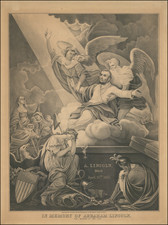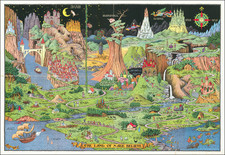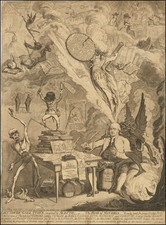Louis Bruguiere's 1835 aquatint view, Tableau Comparatif De La Hauteur Des Chutes D'eau Les Plus Celebres, serves as an informative guide to the tallest waterfalls in the world at the time. This visual comparison, dedicated to the Societe de Geographie, charts these natural wonders' heights, with the Cascade de Gavarnie in the Pyrenes, at 1,266 feet, recorded as the highest waterfall known then.
Set against the backdrop of the burgeoning discipline of geography in the 19th century, this print encapsulates the era's growing interest in cataloging and comparing natural phenomena. The sociopolitical climate was marked by exploratory expeditions and a focus on scientific classification, with institutions like the Societe de Geographie promoting geographical studies. Bruguiere, a member of this esteemed society, presents this comparative tableau as a testament to this spirit of scientific curiosity and exploration.
The aquatint lists numerous renowned waterfalls, including the Falls of the Missouri, Falls of St. Anthony in Minnesota, Cataracts of the Nile, Cataracts of the Orinoco, Falling Spring in Virginia, and Wilberforce and Niagara Falls. It provides an insight into the geographical knowledge of the period, especially considering many of the world's tallest waterfalls remained undiscovered in 1835.
Executed in the aquatint technique, a variant of intaglio printmaking, the piece brings together the artistic and scientific realms. It creates an engaging visual representation that not only communicates valuable geographical data but also manifests the aesthetic potential of cartographic endeavor. The presence of various waterfalls from different continents further underlines the print's global perspective, contributing to its historical and geographical significance.









![Boussole des vents ou leurs noms tant Anciens que Modernes sont Diuisez en six Cercles suivant les principales Nations de l'Europe [Compass Rose & Wind Heads]](https://storage.googleapis.com/raremaps/img/small/84965.jpg)
![[ Game Board World Map -- Gulf of Korea named ] Walker's Geographical Pastime Exhibiting a Complete Voyage Round the World in Two Hemisphere with Tetotum, Pillars & Counters, for Playing This Highly Interesting Game.](https://storage.googleapis.com/raremaps/img/small/102691.jpg)



